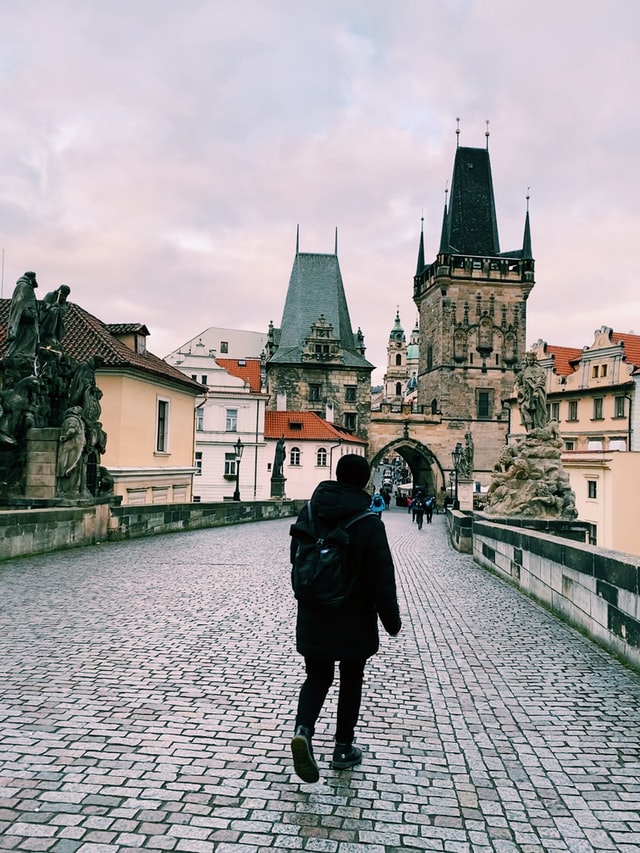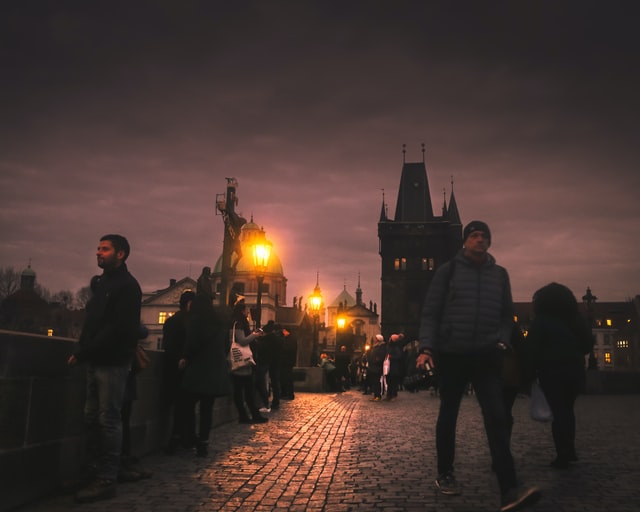Charles Bridge
Charles Bridge is probably the most famous and photographed attraction in Prague. There is no better way to cross from Mala Strana to the Old Town (Staré Mesto) than a walk across its oldest and most impressive bridge, Charles Bridge. For many people, the images one enjoys while on the Charles bridge, towards Mala Strana or Stare Mesto, especially at dawn or dusk are the most emblematic of the “City of a Hundred Spires”.
Charles Bridge is the second stone bridge to be built on the site of an earlier wooden bridge that stood here in the 10th century (slightly north of the spot where Charles Bridge stands today). It was in essence a footbridge that was often threatened by floods. One of them proved to be disastrous in the year 1157. King Vladislav II had Prague’s first stone bridge built in the years 1160 to 1172 after he visited the rich Bavarian town of Regensburg in 1158, where he was crowned Czech King by Frederich Barbarossa.
Regensburg’s bridge, a miracle of medieval engineering became an example of the new bridge that took the name of Queen Judith of Thuringia. A woman of great beauty and mind, educated in politics, the Queen consort seems to have played a role in the building of the first stone bridge in Central Europe. Judith Bridge lasted for 170 years until, in February of 1342, two-thirds of the structure was destroyed by another flood.
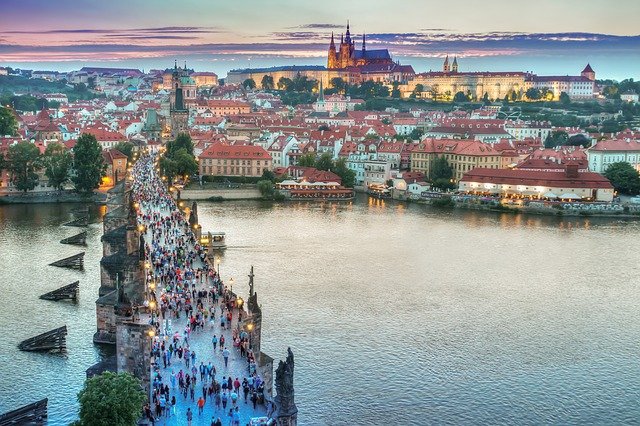
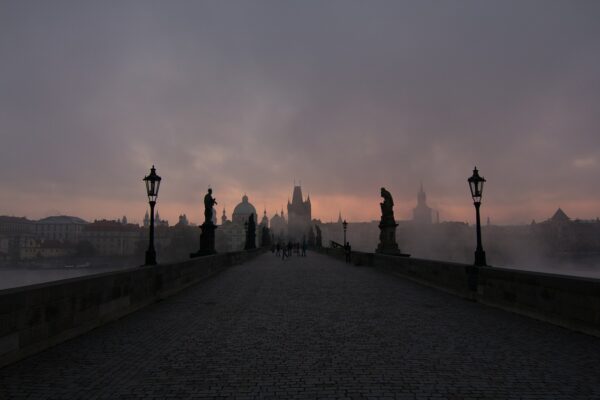
Today the lowest of the two towers on the side of Lesser Town, the Romanesque Judith Tower still stands as a reminder of that era. 15 years later, on the 9th of July of 1357, at 5:31 am according to the legend linked with King Charles’ passion for numerology (which goes: 9th of July (7th) on 5:31-> 9.7.5.3.1 on the year 1357…get it?)
Well anyhow on that day, the newly crowned Emperor of the Holy Roman Empire Charles IV who would make Prague the leading capital of the European continent, laid the first stone of the new stone bridge that would bear his name after 1870. Until then the bridge was called Stone Bridge (Kamenný most) or the Prague Bridge (Pražský most).
The construction began according to the designs of Master Otto and 3 years later the German-Czech architect Peter Parler, master mason of Saint Vitus Cathedral from 1352 and favorite builder of the King, took over the construction. Parler continued to work on the project until the end of his life, which came in 1399, three years before the completion of the bridge.
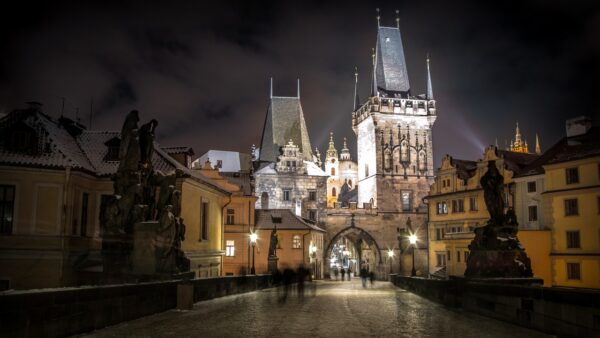
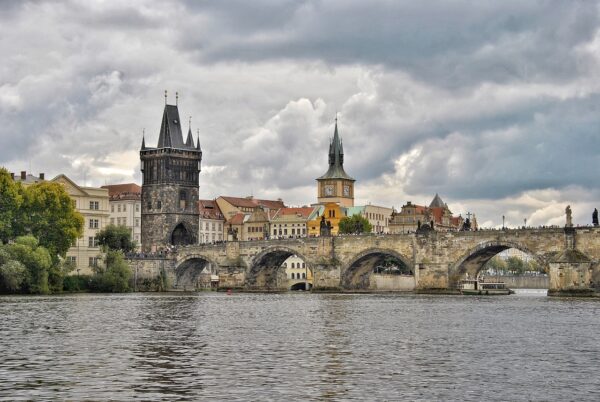
The Gothic masterpiece has a length of 515 meters and a width of 9.50 meters (wide enough for four carriages to cross at the same time). It rises 13 meters above the river’s surface and rests on 16 arches shielded by ice-breakers.
While it stands on a stone substratum, its pillars were built on oak piles loaded with millstones. A probe at the end of the 19th century found that the millstones are held together by iron clamps on which hot lead was poured. One of the pillars was destroyed by a flood in 1367, just ten years after the work began, a threat which seemed unsurmountable especially in 1432 when five of its pillars were damaged and repairs took an incredible 71 years.
The struggle has been ongoing since then with the last restoration taking place in 2010. The road in the center of the bridge is raised and rainwater runs off above the ridges of the arches using stone drains. Rough-grained sand was used while large blocks were held together by unusually firm mortar. Legend has it that eggs were added to the mortar mix. Although the line of beautiful statues is considered an integral part of the monument today most of them were added during the 18th century.
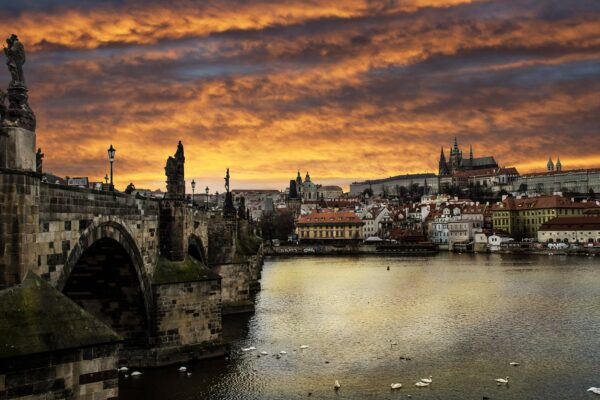
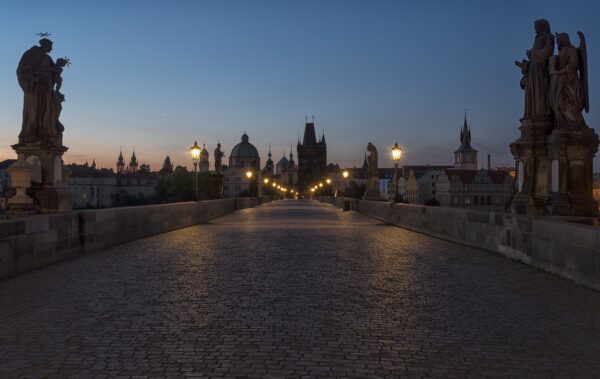
The first of the Baroque gallery was the statue of St. John of Nepomuk, erected in 1683. During the 1700’s avenues of statues of saints gradually grew in such a way that not one pillar remained unoccupied. In total, the bridge is decorated with 30 replicas of the statues and statuettes, most of them Baroque style. The originals are kept today in the National Museum of Prague.
A separate mention must be given to the Old Town Bridge Tower standing on the east side of the bridge, one of the most impressive Gothic gateways in the world. It was also built by Peter Parler between 1370 and 1391 who conceived the idea of a defensive tower that could also serve as a triumphant entranceway through which Czech Kings could pass on their coronation processions.
The 65 meters high tower was originally embellished on its western side by statues of the Madonna on a throne, Emperor Charles IV, and his fourth and final wife Elisabeth of Pomerania that was destroyed during the Swedish siege and the Battle of Prague in 1648 in which the Swedes were successfully repulsed right before the tower.
In the reconstruction that took place between 1650 and 1653 a stone plate with a Latin inscription reminding the heroic resistance of Praguers took the place of the statues. Another reconstruction in 1854 gave the tower its present-day roof with four corner spires.
During another minor renovation in the 1950s two mysterious inscriptions were discovered under the roof that was finally explained as a magic spell that could supposedly protect from evil powers (Similar inscriptions were common on the sacral buildings, for example in Italy).
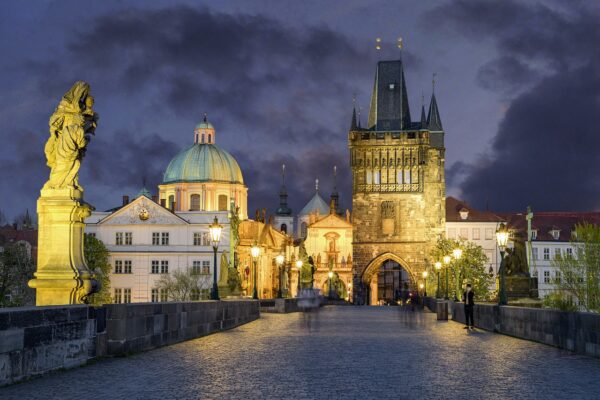
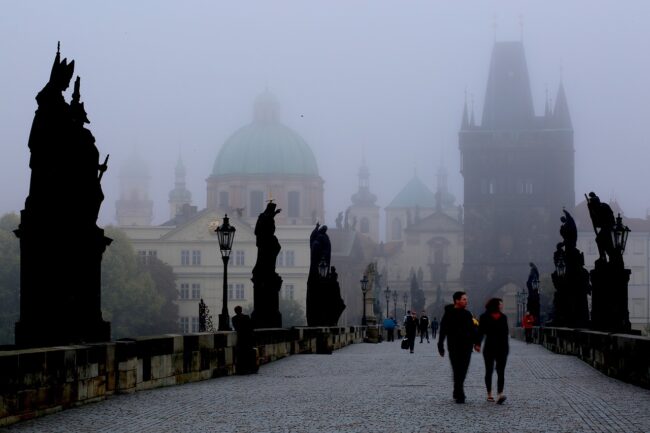
On its eastern facade that remained intact from the Swedish fire, just above the arch we can, first of all, discern the coat of arms of all the countries that were under Emperor Charles IV’s rule. Above them, three statues depicting St. Vitus, patron saint of Bohemia (in the middle), Emperor Charles IV to the right (as we face the tower) and King Wenceslaus IV (under his reign the tower was completed) to the left.
The three statues sit under a triangle pediment decorated with 24 crabs, symbols of the 24 hours of the day. Above them, two more figures, of Saint Adalbert with a miter and Saint Sigismund with a crown stand close to the roof. 138 steps of a spiral staircase leading up to an observation room.
The second floor used to serve as a prison for debtors while in 1621, right after the Battle of White Mountain, the Tower became a platform for the exhibition of the heads of some of the decapitated leaders of the Estate leaders.
Unfortunately, the bridge is packed with tourists and street vendors almost every time of day and night. Only if you arrive at dawn you’ll be able to lose the hoards of elbowing tourists and maybe catch a genuine out-worldly picture that this monument can offer.
